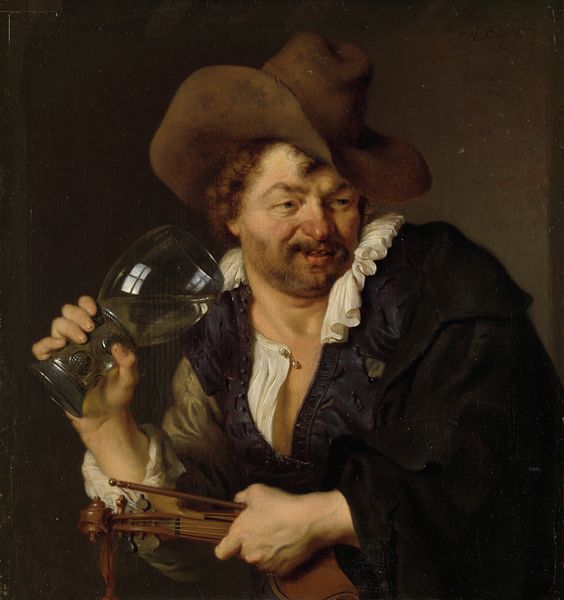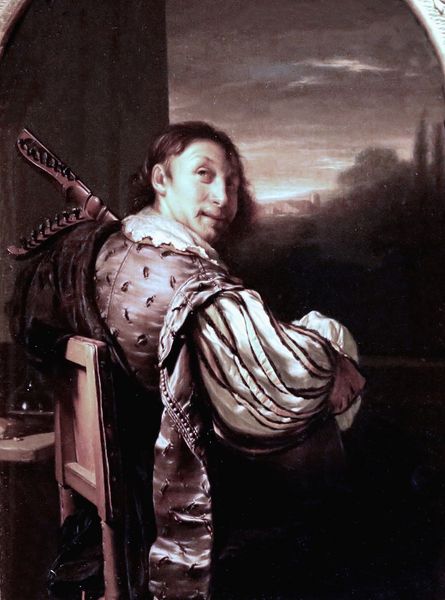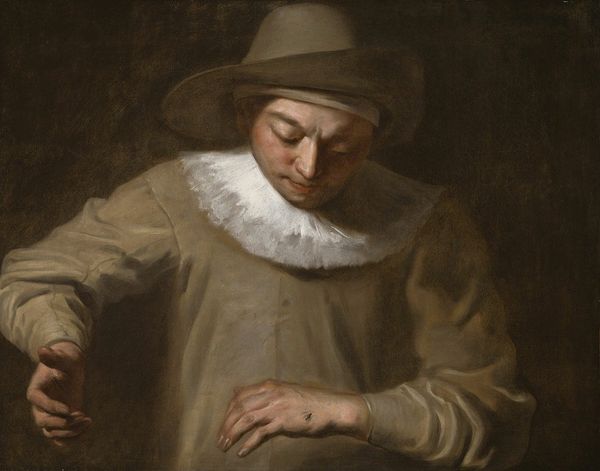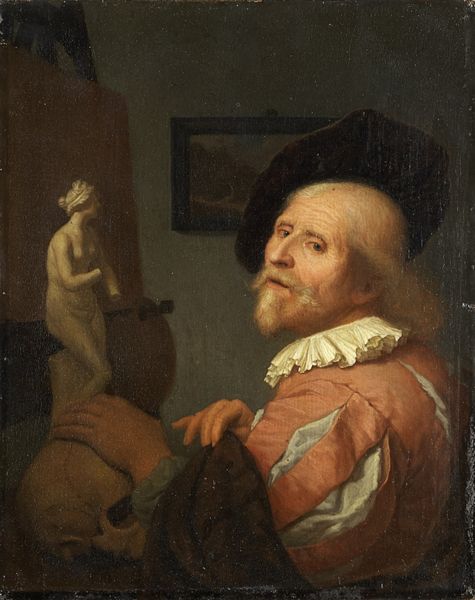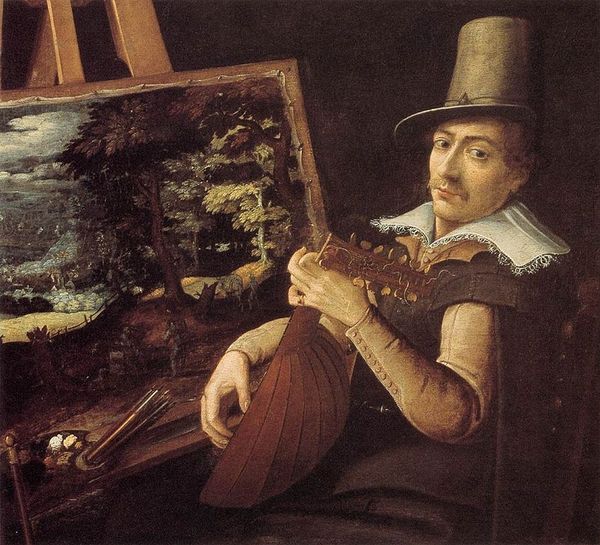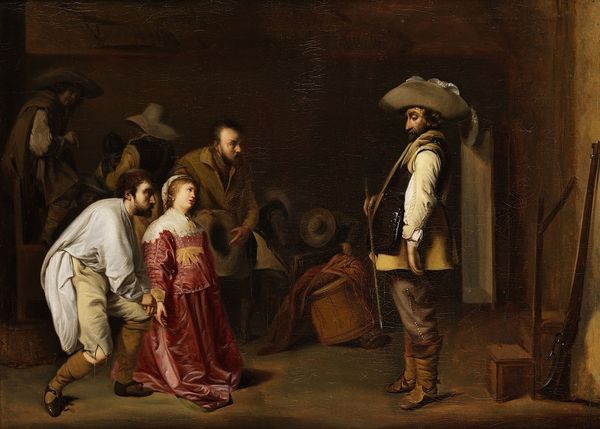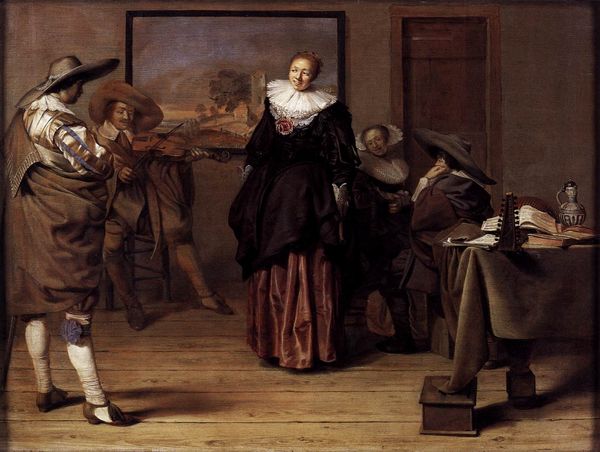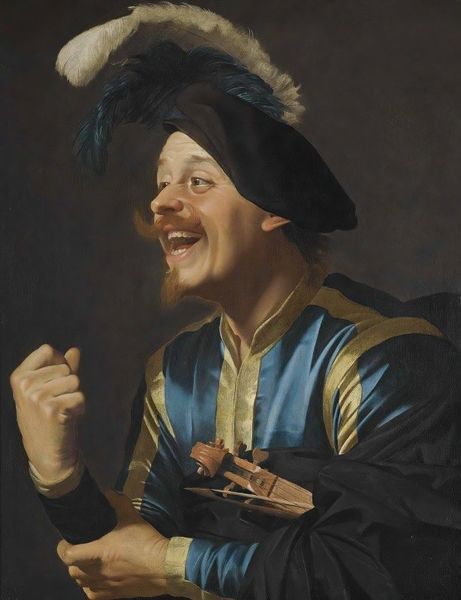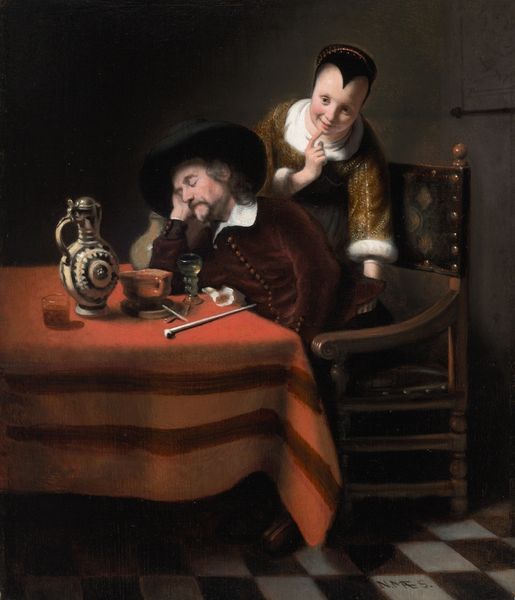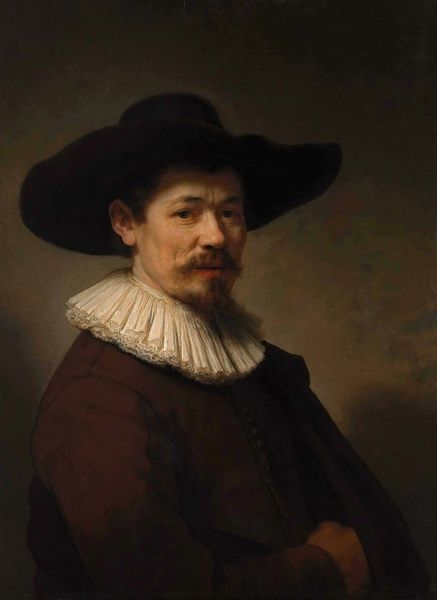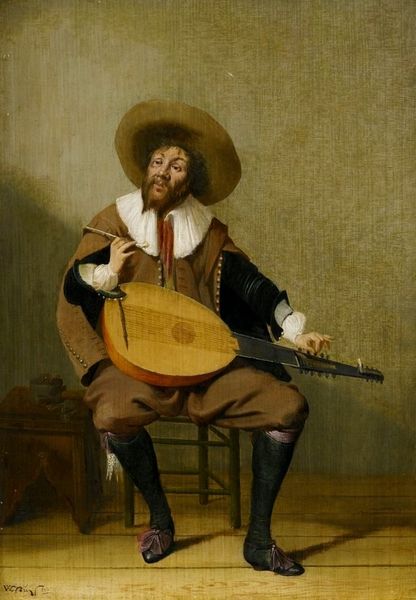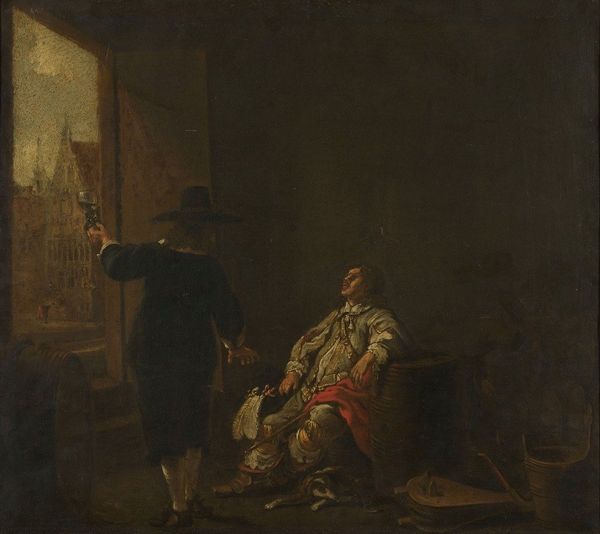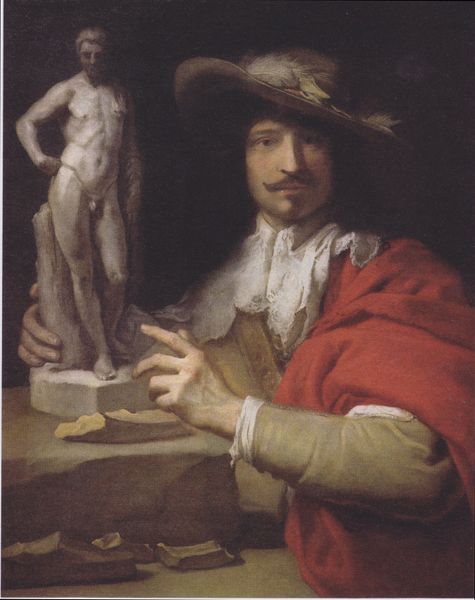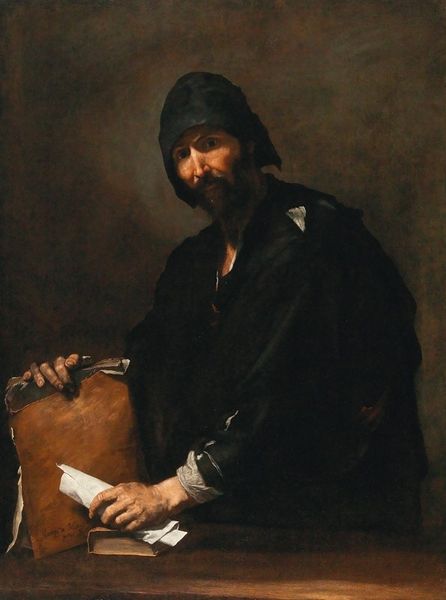
painting, oil-paint
#
portrait
#
baroque
#
dutch-golden-age
#
painting
#
oil-paint
#
genre-painting
#
history-painting
#
academic-art
Copyright: Public domain
Editor: Here we have Frans Hals’ “Portrait of Willem van Heythuysen,” painted in 1635 with oil on canvas. There's such a relaxed quality to the man’s pose, almost nonchalant. How do you interpret this work, seeing it as you do? Curator: Considering the period, and knowing that Hals was commissioned by Heythuysen himself, I look to the materials used, and their social implications. That incredibly detailed lace collar, the luxurious textiles of his clothes, the tooled leather of his boots. These aren't just decorative; they're signifiers of wealth accumulation, meticulously reproduced through the labor of both artist and artisan. Does it make you consider how trade and manufacturing intersected with artistic production? Editor: Absolutely. I hadn't thought so directly about the lace or leather as products themselves. It changes my perspective. So you see the portrait not just as an image of a man, but an advertisement of sorts? Curator: Precisely! Think about the brushwork, how it simulates the textures. Hals isn't merely representing, he’s *manufacturing* an image of status through pigment and skill. It blurs the lines between craft and fine art. Consider how the means of representing wealth become, in themselves, a display of artistic and material mastery. What kind of statement is being made? Editor: That’s fascinating. I was focusing on the individual, but you're pointing out how the artwork showcases an entire system of production. I never considered the 'making' of the man in the making of the painting, to use those terms broadly. Curator: Exactly. Thinking about materials opens up a whole new understanding of historical representation, right? Editor: It does. It connects the visual language to its material roots. Thanks!
Comments
No comments
Be the first to comment and join the conversation on the ultimate creative platform.
